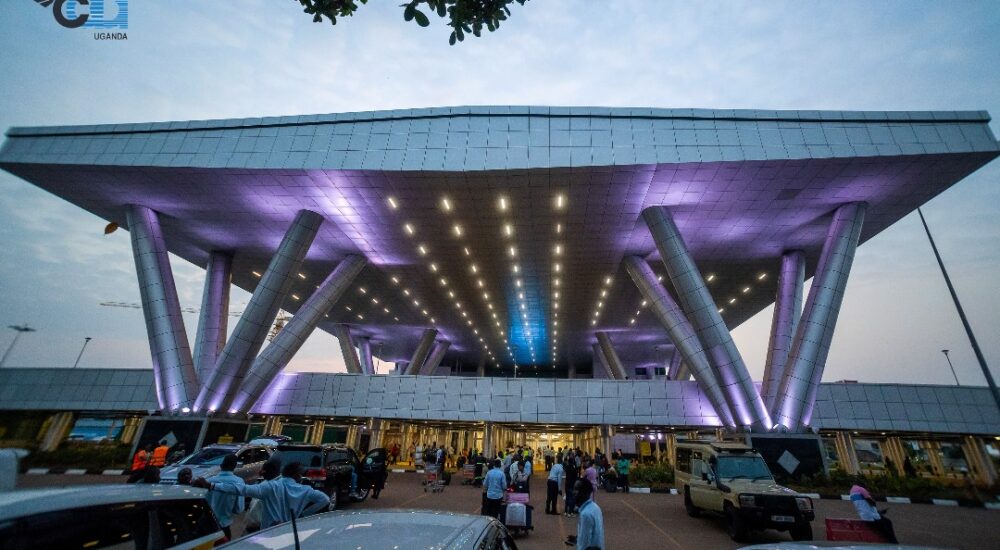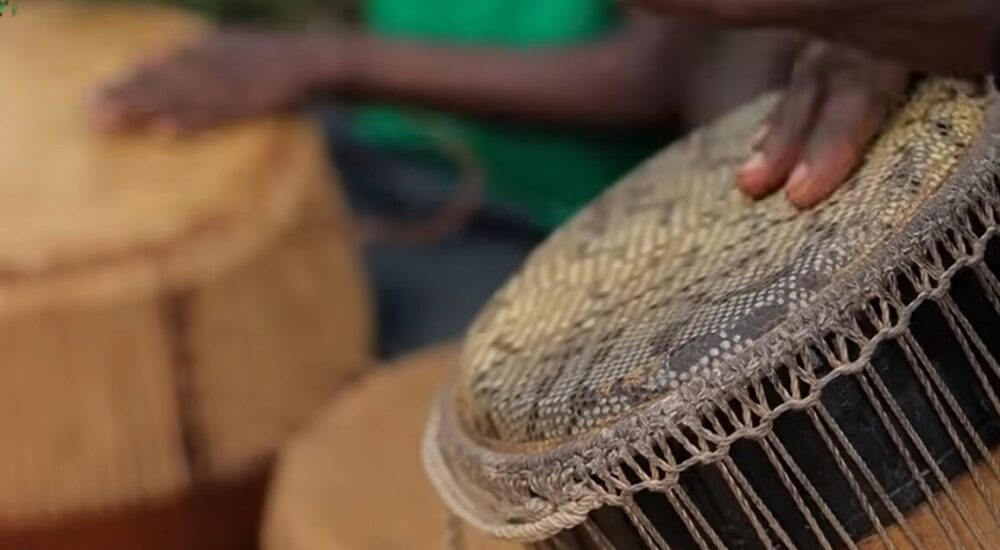Uganda, also known as the "Pearl of Africa," offers an array of experiences for travelers—from…
Visit the Gorilla Guardian Village in Rwanda
Visit the Gorilla Guardian Village in Rwanda, The Gorilla Guardian Village in Rwanda is one of the things that makes the country great, along with its beautiful scenery and many green hills. Even though it is small and doesn’t have as many natural resources as some of its neighbors, Rwanda is one of the most popular vacation spots in Africa thanks to the work of the Tourism Board.
The Gorilla Guardian village in Rwanda, which is also called Ibyi’wacu Village and is in the District of Musanze, is a new and important thing that people who want to visit the country can do. There is a word in Kinyarwanda that means “treasures of our home and heritage.” Most tours in Rwanda that go to see gorillas don’t stop at the traditional village of Iby’iwacu.
The cultural village is a place where tourists can learn about and enjoy traditional Rwandan culture. Most of the men in the Iby’iwacu culture hamlet used to be poachers but have changed their ways and are now helping to protect wildlife in Rwanda’s Volcanoes National Park.
One of the best places to learn about Rwanda’s culture is the Gorilla Guardian Village. Rwanda’s famous customs, people, and past are all brought together in the Village so that they can be seen and experienced by everyone. Tourists from other countries can see what life was like in a normal African village, including the way people lived, the houses they lived in, the traditional dances they watched, how they dressed, the food they ate, the herbs they used, and how old kingdoms were run in general.
Tourists can learn how to hunt in the past, make baskets and mats, and build things. After seeing the gorillas and trekking or peak like Karisimbi, a lot of people want to learn more about Rwandan culture because they had such a unique experience. It’s also a great place to relax while shopping for gifts, souvenirs, and crafts made in the area to show your friends back home.
In addition to making a lot of money and getting a lot of attention, the Iby’iwacu cultural center brings together different ethnic groups in Rwanda, like the Tutsis, Hutus, and Batwa. Based on a similar shared idea, this leisure center brings people together.
Many of the local artists, like the Batwa, used to be poachers. The Gorilla Guardians Cultural Village has given them a chance to try something new, something that will help them support their families and keep them from going back to hunting.
What can you look forward to when you go to Rwanda’s Gorilla Guardian Village?
As we’ve seen, the Iby’iwacu Cultural Center is meant to give you a lot of interesting ways to learn while also giving you a chance to relax and learn about the history of the area. You will be met at the front door by loud drumming and dancing, which is just a sign of all the fun things that are going to happen. Let’s look more closely at the following things to do:
Visit some of the homesteads in the area.
The best way to understand how different people are is to interact with, share, and basically become immersed in the customs of many groups. You will have many chances to learn about the unique Kinyarwanda culture and traditions while you are at the Gorilla Guardians Village. These include going on home visits and community walks.
When you go to Rwanda’s Gorilla Guardian Village, you can sit with the people who live there in their traditional homes and grass-covered huts. The elders will tell you stories and facts about Rwanda and its long past as you sit down. You will have the chance to see banana and vegetable farms in the area. Even better, you could learn how to make a traditional dish or use a special grinding stone to make fine millet flour.
The walk through the neighborhood is also a great way to learn. A guide will take you to see some of the local schools and teach you about the school system while you talk to the kids and students. One of the most interesting things to do on these community walks is to stop by the local art shops that sell local art, woven clothes, beautiful pots, and other things.
You can watch the Intore dancing group do traditional Rwandan dances.
African history and culture are shaped by music, dance, and theater, which give people a sense of who they are. It is possible to hear different kinds of traditional music at the Iby’iwacu Cultural Village in Rwanda. These include the sounds of the Ingoma, Amakondera, Umuduri, Inanga, Iningiri, Ibyivugo, and Agakenke. The sounds are all different, and each one has its own set of instruments and dance moves.
This can be seen in the Intore dance group. This is a traditional warrior dance that men wear grass clothes and small bells around their legs. They hold spears out as if they are fighting or celebrating a win. It will be very important to these young people that you dance with them or at least learn how to play the drums.
Check out the old King’s Palace.
One of the interesting things to see at the Iby’iwacu culture village is the King’s palace, which shows how the ancient Kings ruled and ran their courts. In Rwanda, people not only feared but also looked up to past kings and queens. The monarchs were in charge of everything and everyone had to accept their decisions without question.
All ceremonies and events in the country took place at the palace of the monarch, which was watched over by the monarch, queens, princesses, princes, clan heads, and other important guests. There are symbols of power and information about each clan in the King’s home in Iby’iwacu, which makes it look like an old African kingdom. As you go through each sign, a guide will help you understand and answer any questions you have.
Meet the native healers and herbalists.
Folk doctors were very important to their communities in the past, and they still are today. When people were sick, they went to them for help. Herbs, tree branches, roots, bushes, and other plants were used by traditional doctors to treat known illnesses. Based on ideas and knowledge that have been passed down for hundreds of years, the healers know how to use these substances and have studied them for many years.
They are happy to talk about how traditional medicine has been around since colonial times and is still important today. When you go to the Gorilla Guardians Cultural Village, you will meet a number of traditional healers who will be happy to show you how the local medicines work. Because they only use natural methods, you are welcome to try some of the local plants. You might be surprised to find that they help with an illness you’ve had for years.
Check out the nearby Batwa Community.
People who used to live in the deep forests of Rwanda and Uganda were called Batwa pygmies. They hunted animals and gathered fruits. They were kicked out of the woods by the government decades ago and moved to other places outside the forests. Some of them work at the Iby’iwacu Cultural Center. Since leaving the forest to live outside and take advantage of the chances that come with tourism, the Batwa have made big impacts to the tourism industries in Uganda and Rwanda.
Since they stopped poaching and living off of hunting and gathering in the bush, the Batwa have learned pottery, art and design, dance, and theater. When you visit the Iby’iwacu traditional village, those who live there will show off their shooting skills by setting up animal traps and using spears, bows, and arrows.
Try beer made in your area.
Along with being fun and relaxing, drinking local beer with a group was a way for Africans to get to know each other in the traditional social setting. This was especially true during all the celebrations, like the new year and the birth of a baby. In order to fit in and seem interested at these events, one had to drink. At the Iby’iwacu traditional hamlet, you will learn how to make banana beer and let it brew. You are expected to take part, and the experience will end with a sip of the finished product.
Things you need to know before going to Rwanda’s Gorilla Guardian Village.
The Iby’iwacu culture center has its own rules and customs that must be followed and respected while you are there, just like any other structured area. When you visit the cultural center, here are some things to think about:
People who come to the Iby’iwacu Cultural Center can’t leave trash there. To keep things in order, trash cans have been placed in strategic places around the culture center. It is important to be respectful of wildlife during your tour. This is especially important at the Gorilla Guardians Cultural Village.
People who come to town are asked not to hurt the natural environment, especially trees and other forms of green cover. To avoid coming off as rude, you should know the rules and practices of the area. Try to use your right hand when you eat or meet people in the center, for example. It is proper to use both hands when sharing gifts with a native.
Before you use your camera, you should always get permission. You can ask your tour guide or an adult for help if you don’t understand something. It is especially important to respect differences when you are in a place like the Iby’iwacu culture center that is multicultural and multiethnic. Don’t show too much skin when you dress.
People from other countries are welcome to talk to locals about their own cultures. There will always be differences and similarities between societies and in how things are done in different places. During his time in Hamlet, Engage will also try to look nice and humble. Wait patiently while the neighbors tell you about things and share what they know. The safety of local people is a top priority. Should you have any gifts or funds, please give them to the right people.
Rwanda has more than just the Gorilla Guardian Village that you can see.
Besides the well-known Gorilla Guardian Village, there are a number of other interesting places to visit in Rwanda. These are
Volcanoes National Park.
Going on a gorilla trek in Volcanoes National Park is the most popular thing to do in Rwanda. One of the most seriously endangered species in the world lives in this national park in Rwanda. It shares a border with Uganda and the Democratic Republic of the Congo.
Experts think there are about 600 gorillas in the park, which is a big jump from 1981, when they thought there were only 240 to 250 animals there. If you want to see one of the 18 habituated mountain gorilla families, you have to pay $1,500 for one of the limited number of day hiking passes. The easiest way to get to the park headquarters is to use a reputable trip operator. They can also set up transportation from Kigali.
You have to walk for four to eight hours to see mountain gorillas in Volcanoes National Park. You spend most of that time going through strange bamboo forests, natural meadows, and wetland areas. Finally, the park rangers will show you one of the gorilla groups that lives there. You can watch the animals eat, care for their young, and talk to each other for an hour.
People in Rwanda often think of gorilla hiking as a safe activity. The gorillas don’t seem to care much about the people who come to visit. Guides with guns who make different clicking noises with the gorillas keep tourists safe, making the experience one you’ll never forget.
Nyungwe Forest National Park.
There are 1,068 plant species, 322 bird species, and 75 animal species in Nyungwe Forest National Park, which is one of the most important places in Africa to protect forests. Most people who visit this jungle do so to keep an eye on the chimps that park officials have made used to people. This animal experience costs less than going on a gorilla safari, but it’s just as cool.
In Nyungwe, you can do more than just hang out with monkeys. The park has the only canopy walk in East Africa. It’s about a 90-minute hike from the Uwinka Visitor Center to the walk. You’ll walk across a 91-meter-long suspension bridge that hangs more than 50 meters above the lush jungle. The view of the faraway mountains and trees will be very impressive.
Akagera National Park
You can’t go to Africa without going on a game drive. Akagera National Park, which is two and a half hours from Kigali, might be a good place for people who want to go on safari. Thanks to the African Parks organization, Akagera and its wildlife have come back from almost going extinct during the Rwandan war. The 1,140-square-kilometer area is one of the biggest protected wetlands in Central Africa. It is home to all five of the “Big Five” species, as well as many birds and antelope.
It will take a lot of luck to see a lion or rhino because caretakers are still trying to get more of them, and there aren’t many in Akagera right now. Zebras, hippos, elephants, giraffes, and Nile crocodiles are all easy to see on a self-drive tour. The animals that live here are just as beautiful as the land itself. From savannah fields to wetlands and lakes, the landscape will change in a big way. At the tourist center, you can hire a knowledgeable park guide. They know exactly where to find the animals you may be looking for.
Kivu Lake.
When you’re done with all of your outdoor activities, you’ll want to rest. Lake Kivu is the best place in Rwanda to do that. The largest lake in Rwanda covers 2,700 square kilometers and is ringed by misty mountains. From Rubavu, a vacation town on the northern shore of Lake Kivu, you can see everything. It has a lively harbor, a sandy beach, and lovely facilities, such as the Lake Kivu Serena Hotel. You’ll feel better after spending a few days in this peaceful town. With Kingfisher Journeys, you can get even more in touch with nature. The tour company can set up a breathtaking sunset kayak trip on Lake Kivu with singing fishermen, as well as multi-day paddling trips that will take your breath away.
Finally, Monumental Expeditions and Safaris includes a visit to the Gorilla Guardian Village in most of our Rwanda Safaris. This is especially true if you book a gorilla trekking trip to Volcanoes National Park through us. Because it is so special, we are sure that seeing the Gorilla Guardian Village in Rwanda will be one of the most memorable parts of your safari.


